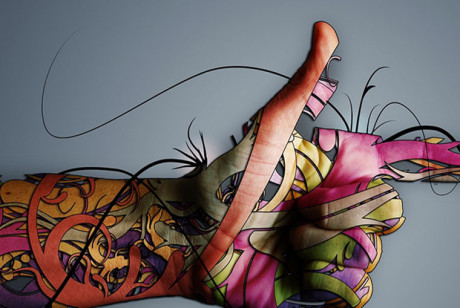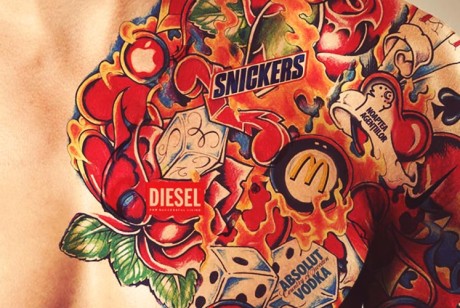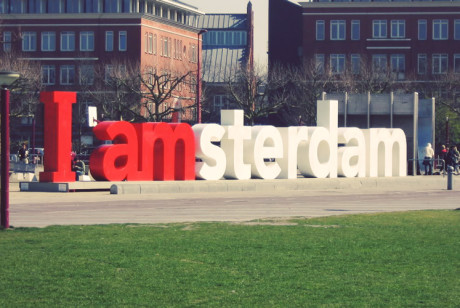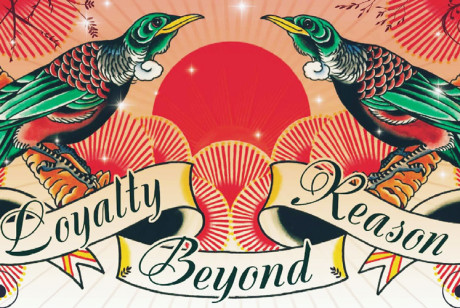Making Magic
Friday, 16 October 1998 - Budapest, Hungary
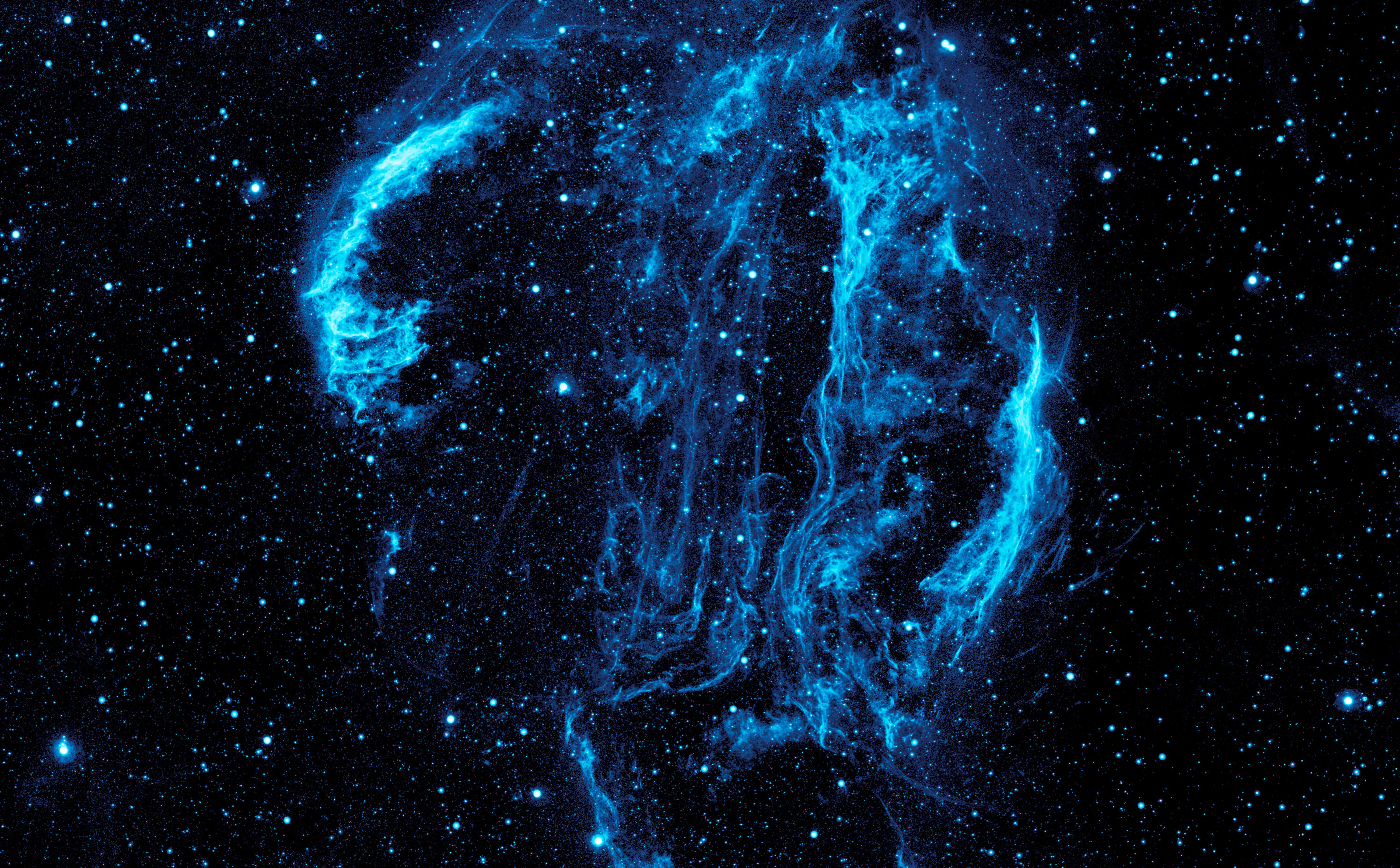
Presentation Summary
A speech to the European Advertising Agencies Association Conference in Budapest. Kevin Roberts’ response to an address by Mr Niall Fitzgerald, CEO of Unilever, to the 1997 EAAA conference, in which Mr Fitzgerald questioned the ability of advertising agencies to lead interactive marketing strategies. Building brand equity, says Kevin Roberts, is still the main event, and the foundation of long term business success.
Exactly one year ago the CEO of Unilever, Mr Niall Fitzgerald, stood before you and attacked creativity and big ideas. Mr Fitzgerald suggested that advertising creativity and advertising-driven ideas are outdated, mass market concepts. Advertising ideas and creativity won’t contribute value in this new media age of fragmentation, accelerating consumer choice and one-to-one interactivity.
Advertising agencies, the argument went, are dinosaurs, sad, lumbering structures stuck in a mass media desert, clinging to 30 second TVCs, blinded by the asteroid called “new media” that has crashed on our planet. Too big, too middle-aged, not hip enough, and peopled by the digital homeless. Extinction is at hand. I feel like I’m a Jurassic Park dweller!
We are, Mr Fitzgerald implied, suffering the death of a thousand cuts delivered by management consultants, brand consultancies, design groups, direct marketing agencies, new media agencies and small marketing communication hot shops.
As I read the transcript of Niall Fitzgerald’s speech, I found myself feeling more and more pissed off – it seems like it’s open season on attacking agencies nowadays, everyone’s jumping on the bandwagon. Clients, management consultants, Silicon Valley hot shot technic nerds and even Rance Crain of Ad Age. Enough’s enough! In the words of my New Zealand compatriot, Xena, Warrior Princess: “Stop staring at me before I take your eyes out!!”
After last year’s Dublin speech I heard resentment and outrage – but it was a very hushed outrage given the enormous power wielded by Unilever. The speech was faxed from agency to agency. I received copies from at least seven different sources, and then…nothing. I had been in the business only six months.
I waited for the leaders of our industry to respond with their vision of the future of advertising. And their views on why the bits that Mr Fitzgerald had got right were just curtain raisers, and that he had missed the main event entirely. The silence was deafening. However it’s time for the Empire to strike back! I’m lucky though – I’m new, I’m naïve, and I’m the head of a global P&G agency with zero Unilever business and zero Unilever prospects – which are about to go sub-zero!
So today, it’s time to have some fun, to charge back and reassert the central role of the creative communications agency in the business mix. I want to leave Mr Fitzgerald and our other critics in no doubt as to why our industry exists, and what our contribution is.
In one word, we must exist for the sake of Simplicity.
Brief, crisp, penetrating, perceptive and creative insights into the hearts and minds of consumers. Compelling calls to action. Memorable ideas, images and stories. Where less is more. Where understanding triumphs over information.
Let’s face it, we are in a reductionist business. No matter how many boxes of client briefing materials we have to plough through, no matter how long or short or deep or wide the communications we produce are, simplicity, clarity and cut-through are what we aim for.
Our brief, tough and uncompromising, was set by Albert Einstein: “Be as simple as possible, but no simpler.”
We all know that the single-minded proposition is the foundation of the 300 billion-dollar-a-year communication tool called advertising. I’ve heard people who want to diminish what we do call it the “simple-minded proposition”, meaning that advertising creativity dumbs things down to the lowest common denominator.
In fact, the “simple-minded proposition” is one of the best insults I have ever heard, because too many of the parties involved in the marketing mix today invest in making things complex.
We live today not in the Information Age, but in the age of Information Anxiety. This is the condition of being swamped with data but starved of understanding. I know what it’s like in the client ghetto – buckets of information, tons of facts, countless MBAs adding knowledge by the megaton, and not a single insight or consumer connection to be found!
There is so much information available today that by itself, information means nothing. It’s just background noise. Mere possession of information is no longer a competitive advantage. In fact not being able to see the wood for the trees is a common competitive disadvantage!
You all know the argument. People today are time-poor and stressed-out. They have increasing demands on their attention. People can’t absorb or react to all the competing messages they are confronted with each day. There is just so much stuff out there, hundreds of television channels, thousands of magazines and millions of websites, billions of faxes, emails and phone calls and trillions of transactions. The result is that consumer attention has become the most powerful currency in today’s economy.
No matter what kind of business or organisation you are, your job today is competing for the attention of consumers.
The distinct risk to advertising, in fact to all communication in the Attention Economy we live in, is a crisis point of too many attention options. Advertising can be perceived by consumers as part of the problem, not as a solution. Dialling up the volume by throwing more money at the media budget will only be a temporary fix. (Did I really say that!). It is the fast and easy track to take. The challenge for both clients and agencies is to be at the simplicity and clarity end, the understanding end, the ideas end, not at the complexity and volume end.
We must not let the allure of new media and new technology distract us from the basic challenge in front of all businesses, and that is building brand equity. This is still the main event. The brand stands like a shining beacon in the sea of ambiguity and complexity in which we swim. I’ve spent 30 years in brand management and I believe more than ever that what we want the brand to stand for in the consumer’s mind, is the foundation of long term company success. Too many CEOs have opted out of this task, focussing on quarterly earnings, shareholder value and re-engineering. They’ve forgotten job number one – to build brand equity.
The critical challenge of advertising remains unchanged – to build brands that consumers trust, and therefore use year after year. The need for meaningful consumer identification with the brand has become more crucial than it’s ever been before as new media evolve. In fact, entire organizations are being engineered around the consumer experience of the brand, which is the reason amazon.com has become one of the most quoted success stories of the web.
Brands make consumers feel connected. Brands convince people they want to belong. Brands tell their story, give their point of view and state their points of difference. Brands give confidence and offer a route through the confusion. They are a way for consumers to become emotionally involved. Brands are a promise, you know what you’re getting, exactly, always. You can count on them. You trust them. Some, thank God, you love!
The commodity phenomenon has made this sort of information more important, because when price and service and even quality are removed as points of difference, buying into an attitude or experience is a reassuring solution to the consumer’s choice dilemma.
What I really want from a brand is engagement. I want dreams, memories, passion and laughter. That’s what great brands provide. And that’s what the great agencies will bring to every medium and tool we touch, the web included.
All brands and brand building must strive for emotional connections, for the great stories and for love. At Saatchi & Saatchi we adore people who are competitive, passionate and restless because this is the territory in which the telling insights about brands and consumers, and the connections between them, are located. Who else in the business mix is going to contribute this? Whose job is it? Who are the magic makers? Let’s take a look at the candidates.
The very best clients have the vision, the focus, the time and the commitment to manage their brands magically. We all have some of these! They love us, we love them, they deliver a great brief, we deliver a great product! But they’re not the majority. Many companies today are facing massive problems internally. I see layers of indecision. I see glacial-like approval processes. I see armies of middle managers who have the right to say no but not the power to say yes. The famous Abominable No-Man.
I also see clients practicing continuous restructurings that demotivate entire marketing departments. And I see some mean-mouthed marketers who want world-class creative work but who also want their invoices to be “astonishingly modest.”
More and more, we’re facing the compensation issue from a defensive base. It’s not about commission, fee or cost-plus. It’s about partnership, revenue sharing and incentives. We work better when we’re pushed and motivated and paid accordingly, not when we’re reduced to cost-based generic suppliers!
The worst feature I see in some companies is their abuse of an already ridiculous process, the pitch. Do they get their accountants to pitch every project? Do they get roomfuls of lawyers to present alternative defenses for court cases? Do they have architects prepare entire building designs before awarding a contract. Do they require candidates for CEO positions to invest tens of thousands of dollars into their application? No, no, no and no.
The exploitation of the pitch process by clients to get free ideas, free creative and free strategy is a huge drain on agency resources and morale. These often stretched-out processes are used by some companies to experiment with marketing strategy. Some clients, particularly middle managers with a Napoleon complex, use the pitch and re-pitch process to reinforce a master-slave relationship with agencies.
Taken together, this corporate behavior – what I call demarketing, as in destructive, debasing and debilitating, leads ultimately to agency burnout. And advertising agencies, because of our innate desire to please – and because we’re basically just nice people (!), have bought into this process and allowed themselves to be sidelined as eager doers, rather than staunch, long term value-added partners.
Instead of holding out the promise of an illusory glittering prize at the end of the process for one grateful, subservient and compliant agency, clients should be expected to be more intuitive, more trusting and more ethical when it comes to agency partner selection.
Now back to the other potential magic makers!
The big management consultancies sure aren’t the people to help build brand equity. However they do have one core competency – they know how to bill! Management consulting is a $50 billion business worldwide, employing at least 100,000 people. They have regiments of youthful, cloned MBAs who speak in obscure technical language and who usually argue for sweeping changes at the companies they study, regardless of whether they are necessary or not. It’s good for their business to do so. Allowed to run amok, consultants can run successful businesses into the ground.
Management consultants are driven by their secretive proprietarial formulas that are focused on internal processes rather than on making connections with customers. They are obsessed with reducing costs rather than increasing revenue, on risk management rather than brand equity development, on complexity rather than simplicity, on safety rather than risk, on short-term assignments rather than long term relationships with clients. What they sell very effectively and very expensively is comfort and reassurance.
Management consultancies take pride in building complex models on which they build strategy, influence, networks. You name it. That’s what clients value them for: proving that it really is all very difficult. This dismal result is frequently a controlled and controlling process of the tried and true. The sole concession by these reformed accountants and auditors to creativity is dressing casual on Fridays.
Management consultancies are now convinced of their own importance in the scheme of things, of their ascension to the right-hand side of the CEO and Board. Many are aggressively and competitively investing in their own brands. Witness the advertising campaign currently running for KPMG. $100 million and a call for clarity. It’s an impressive pitch, smart of them to be using both television and magazine advertising to develop their brand equity, but should any client have a management consultant be the creative guardian of their crown jewels – I mean brands?
Let me give you one piece of reassurance. The day Saatchi & Saatchi puts risk management at the top of its agenda, you can be sure, like Elvis before me, that I will have left the building.
How about research companies as the keepers of the flame? No way. They’ve cramped themselves into the role of score keepers and reporters, always looking backwards. They’d rather be exactly wrong rather than approximately right.
These are my fundamental beliefs about advertising research:
- Looking for a foolproof formula for writing successful ads is about as realistic as finding the foolproof formula for living life.
- By trying to tame, we destroy.
- By trying to analyze, we lose touch.
- By refusing to trust our instincts, we lose them.
- By trying to eliminate the risk of failure, we eliminate the chance of success.
The best companies, the peak performers of business, are driven by ideas, insight, instinct, intuition, inspiration, innovation and imagination. In advertising however, these great big “I” words are being stifled by outmoded, deductive and structurally flawed left brain research processes, that attempt to test advertising creative. I feel like the character in the film As Good As It Gets, who laments to Jack Nicholson “I’m drowning, and here you are describing the water!”
What about the other candidates named by Mr Fitzgerald as nibbling at the corporate table.
Design companies. I love design that is simple, fresh, minimalist. Design must support understanding, but it’s not the main event, it’s a support act. More technocratic than passionate.
And what about the hot shot web firms. Innovation happens on the fringe and this is where many of these companies need to be located in order to experiment, create new stuff and be radical. My view is that the hot shot web firms have both a production and technical focus, as well as a strategic and creative role. We will happily work with them, have equity in them, partner them and engage them as suppliers to develop creative material that connects with consumers.
PR firms, direct marketing firms, integrated marketing communication firms…like many of the multinational advertising networks, we own these types of firms, we compete with them, we complement them. In many instances the entire process is integrated under one team under one roof, like at Saatchi & Saatchi Los Angeles where the enormously successful website for Toyota is run from the same group that does Toyota’s print advertising, TV ads and dealer brochures.
The assumption made here last year that large agencies are stuck in a competitive time warp not knowing how to respond, is plain wrong. I’m in no doubt about Saatchi & Saatchi’s position. The metaphor is wrong: we’re not dinosaurs. We’re Godzilla, and we want it all: TV, print, billboards, infomercials, radio, pencils, skywriting, the web. If it’s the right medium to communicate, we’ll embrace it and use it.
Let me give Saatchi & Saatchi’s perspective on Mr Fitzgerald’s remark that advertising agencies do not have the digital smarts to master the interactive media environment. I suspect you’ll find your own agencies in similar positions to ours.
We have our digital cards fully on the table. We wholly own Darwin Digital which operates principally out of New York and San Francisco. Darwin has annual capitalized billings of over $40 million and a place in the top 20 interactive agencies. We have a large interactive group inside our Los Angeles office. We have a significant interest in Red Kite, one of Europe’s leading new media production agencies based in London. We have web teams in offices from Singapore to Wellington, from Frankfurt to Buenos Aires. We do Internet, Extranet and Intranet, Java and Shockwave, chat and transactions, you name it, we do it.
We have web projects for many of our roster clients including Procter & Gamble, Toyota, Lexus, Hewlett Packard and General Mills. And we are forming significant strategic alliances. One month ago we signed a partnership with LA Live who are a pioneer of streaming live broadcasts on the web.
And we’ve got www.saatchi-saatchi.com, our site for the Innovation in Communication Award. We’ve run a worldwide ideas competition and on our website you’ll find eleven hot, radical and world-changing ideas about communication. They’ll blow your mind.
And like all client Chief Executives I’m sure, I have my own web site saatchikevin.com.
We’ve got the digital smarts all right. Advertising agencies have been hip to digital editing, graphics, video, music, effects, you name it, since the beginning. Conceptually and technically, we’re not intimidated by interactive technology, our people love it! Are client CEO’s as digitally hip as their agencies?
Websites and electronic commerce are not, however, the main event. They’re tools to support and facilitate the brand. I’m relaxed about how to steer a large organisation like Saatchi & Saatchi through the technology turmoil. This is just the beginning. The web is only 1500 days old, pretty young for a big idea to fully flower. There are thousands of prophets of change, but very actually few committed practitioners. At this stage we don’t have to respond to every eddy and swirl. In fact we could tip over if we do.
My view is that the web is a very clever distribution mechanism which is bringing much greater efficiency and proximity to the relationship between companies and their customers. But I don’t believe, as some cyber-optimists have proposed, that the web is as significant as the invention of fire itself. The web is functionally fantastic, but it’s a tool, a terrific place to present information but not, at this stage, a terribly emotional location.
Another of last year’s assertions was that the web will herald the demise of network television. Is this so? Possibly. Maybe. No Chance! Do I really care? We have had wild speculations about the impact of technology on society for decades, centuries even. Remember when people talked computers ushering in the paperless office? And the death of print? And that the Internet will replace books? To use the term of renowned information architect Richard Saul Wurman, we operate in “the age of also”. No new medium displaces an existing one, it simply adds to the choice of communication tools a marketer has available to make connections with consumers.
For a reminder of the global power of emotions, storytelling and ideas, please consider this:
Without any personalisation, without any customisation, without interaction of any kind – and with an outcome known in advance, James Cameron and The Titanic has just swept away the largest movie audience of all time. $2 billion in revenue, that’s a lot of groceries in the shopping basket.
Emotion. Passion. Ideas. Simplicity. These are the big things that big business needs from its creative agencies. No-one else is going to provide these essential elements for business success, not client management, not the accountants, not the management consultants, not the researchers, not the hot shops. It’s not their job, and besides, they’re not crazies, they’re not dreamers, they don’t misbehave, they don’t spend a lot of time looking out the window just wondering and imagineering.
I believe that we should abandon the cliché that creativity is 90 percent perspiration and ten percent inspiration. That’s just not true. At least not where I work. Perspiration is all in the making-it-happen, in fact it’s the tactical easy stuff. That’s the 10 percent. Inspiration is actually the 90 percent, the Eureka moment, the forcing it out, the blinding insight that you’ve spent weeks caressing, fighting and kicking it into shape until it has taken shape as a real BFI!
Creativity is a rare thing. Creative directors don’t grow on trees like MBAs. There are, for example, only about 20 people in the world at this moment capable of competing competitively in Formula One motor-racing, and this is probably the same number of people who can consistently turn out breathtaking, world-changing creative. Great clients will forgive you everything if you produce mind-blowing, mind-changing ads that drive their business and help their brands reach the stars.
We dropped the word “advertising” from Saatchi & Saatchi’s corporate ID. We did it to force a change in the way we think about our work. For all of us here, ideas are bigger than advertising. Advertising is a tool. Ideas are the currency of the future. Our industry is the fountainhead of imagination, the field of dreams and the crazy haven for clients to escape the relentless, dreary rigors of re-engineering and restructuring.
Agency people are to be urged to go and make magic, to be emotional, to embrace love, to pursue failure, to fight for their ideas and to declare war on processes which inhibit fresh hot ideas getting to market quickly.
I absolutely know I’m right about this. I was the client for 30 years. I approved the briefs and paid the bills. I’m telling you that creative agencies with big ideas are to be celebrated, nurtured, loved and rewarded today, tomorrow and into the back of beyond.
I would have written this speech if had I still been a client. Niall Fitzgerald offered us a challenge last year. In New Zealand, right on the edge, where I’m from, this is how we respond – Kia Kaha!
